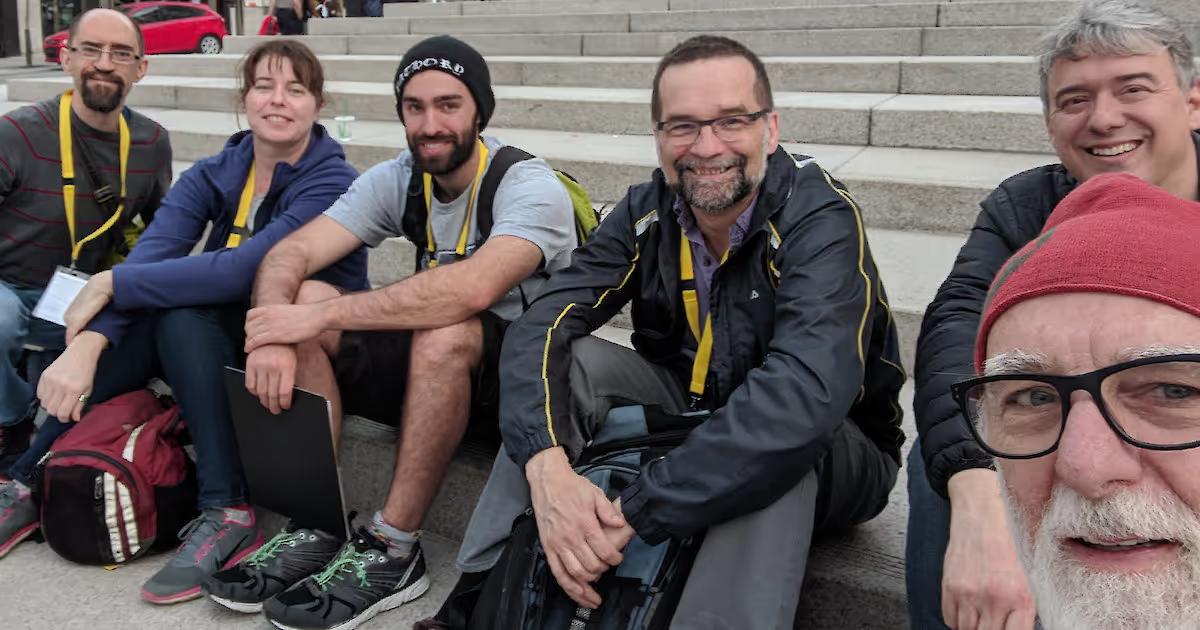Counting the homeless to improve their lives
Working with new technologies is a stimulating experience, allowing you to chart unknown territory and leave your comfort zone. At Spiria, leaving one’s comfort zone took an unusual twist when a group of employees decided to spend an evening helping to count the number of homeless in Montreal.

<div><div><p>On a particularly balmy spring evening, a team of volunteers gathered to lend a hand in the second annual “Je Compte Montréal”, an initiative to count the number of homeless persons on the Island of Montreal. The event, organized by the <i>Mouvement pour mettre fin à l’itinerance à Montréal</i> (“Movement to End Homelessness in Montreal”), was in its second year. </p><p><img src="https://cdn.prod.website-files.com/67c06f07cfba9b0adb43e16c/684705b1086a552384a7a198_count-montreal-02.webp" alt="Équipe Spiria." title="Équipe Spiria."></p><p>The meeting point assigned to our team was the Downtown YMCA at 1440, Stanley Street, where an army of volunteers was hard at work welcoming other volunteers, team leaders, and teams.</p><p>The organizers had thought of everything, and in the organized chaos, we sat around a table to decide how to canvas our assigned sector. Our goal was to come into contact with every homeless person present in the area delimited by Mansfield, Saint-Catherine, Jeanne-Mance and Rene-Levesque streets, in downtown Montreal.</p><p>At first, the task seemed Herculean, and it is with some trepidation that our group headed out to Jeanne-Mance Street, at the other end of our sector. Our approach was to start at the furthest point from the Y and to work our way back, approaching passers-by on the way. The art of accosting strangers on the street doesn’t come naturally to most of us, and it took all our courage to set ourselves to our task.</p><p>But the question is, what, exactly, is homelessness? Is that guy over there, sitting on a bench, with a cellphone and a beat-up suitcase, actually homeless? What about that other guy eyeing us warily and slouching away? Or what about that couple kissing on the park bench, with their backpacks and large beers? Are they runaways, or tourists?</p><p><img src="https://cdn.prod.website-files.com/67c06f07cfba9b0adb43e16c/684705b48d3149e8b6b22ca2_count-montreal-02b.webp" alt="Équipe Spiria." title="Équipe Spiria."></p><p>We were supposed to comb every last street, lane and back alley between 8 and 11pm; but as early as 7pm, we were sitting at the Place des Festivals, discussing the best way to proceed and eyeing passers-by.</p><p>We launched into our work with some excitement and infectious energy. Accosting a homeless person is no easy feat — especially since half the time, they refused to speak to us, walked away or asked us to leave. </p><p>We were supposed to give them a 5$ gift card at the end of our conversation, in exchange for their time, but maybe we would have had better luck if we had pulled it out as we were approaching them. The questionnaire had over twenty questions over three pages. Some of the questions had sub-questions, depending on the answer. They dealt with place of residence, periods of homelessness, and stays in hospital or help centres, all of which had to be answered. Some questions required the selection of just one answer, while others allowed several answers. In short, the questionnaire was difficult to use, and an electronic version loaded on a tablet would have made our task much easier. The hardest questions to ask were the ones about gender and sexual orientation. No question dealt with drug use.</p><p>The initial discomfort of dealing with homeless persons quickly turned into sheer energy, to the point that our group of six Spirians often split up into two separate teams — never the same twice — to cover the territory.</p><p>Having worked our way back to the Western end of our sector, we decided to give it a second pass, to see if the urban fauna had changed. Imagine our surprise when we discovered that at store closing time, the streets that had seemed so familiar and safe turned into the hunting grounds of an entirely new type of fauna!</p><p>While homeless persons were few and far between during our first sweep, we were now a minority on Saint-Catherine Street’s urban crucible. Homeless persons were everywhere, carrying all their worldly possessions in their backpacks, faithful dog by their side, the outcasts of society looking for love, or just their next fix. The street was heating up, as the night was cooling.</p><p>At the end of the evening, tired and sore-footed, we decided to call it a day. That’s when I learned that one of us would be sleeping at the office, on the floor, in a sleeping bag. I thought it was pretty funny, but only because it was not a permanent predicament.</p><p>I’d like to thank the brave and tactful people who volunteered to take part in this census of homeless persons in Montreal: Isabelle, Guy, Jean, Stephane and Cyril. I’d also like to thank Spiria, which supports us and makes this kind of initiative possible. </p><p><img src="https://cdn.prod.website-files.com/67c06f07cfba9b0adb43e16c/684705b8bd0abd8d6edefbdc_count-montreal-03.webp" alt="Je compte MTL 2018." title="Je compte MTL 2018."></p><h2>To conclude, a few personal reflections:</h2><p>What struck me, when looking at homelessness up close, was its diversity. So many lives upended by mental illness, derailed by toxic environments and successive foster homes, or poisoned by the insidious effects of substances used to dull physical or emotional pain. </p><p>There seems to be no one cause of homelessness. Each story is unique, and there is no miracle solution to this multifaceted problem. Of course, initiatives like last week’s can give a face to the problem, but it is only a tool to assess the problem, not a cure. It remains to be seen whether it will be followed up by concrete action.</p><p>As for me, I’ll never be able to look at homeless persons the same way again. What can we do about it? We can start by listening to them. Homeless persons are only bruised and battered humans trying to find peace with what little they have.</p></div>
Want to Work Together?
Every great project starts with a conversation.


